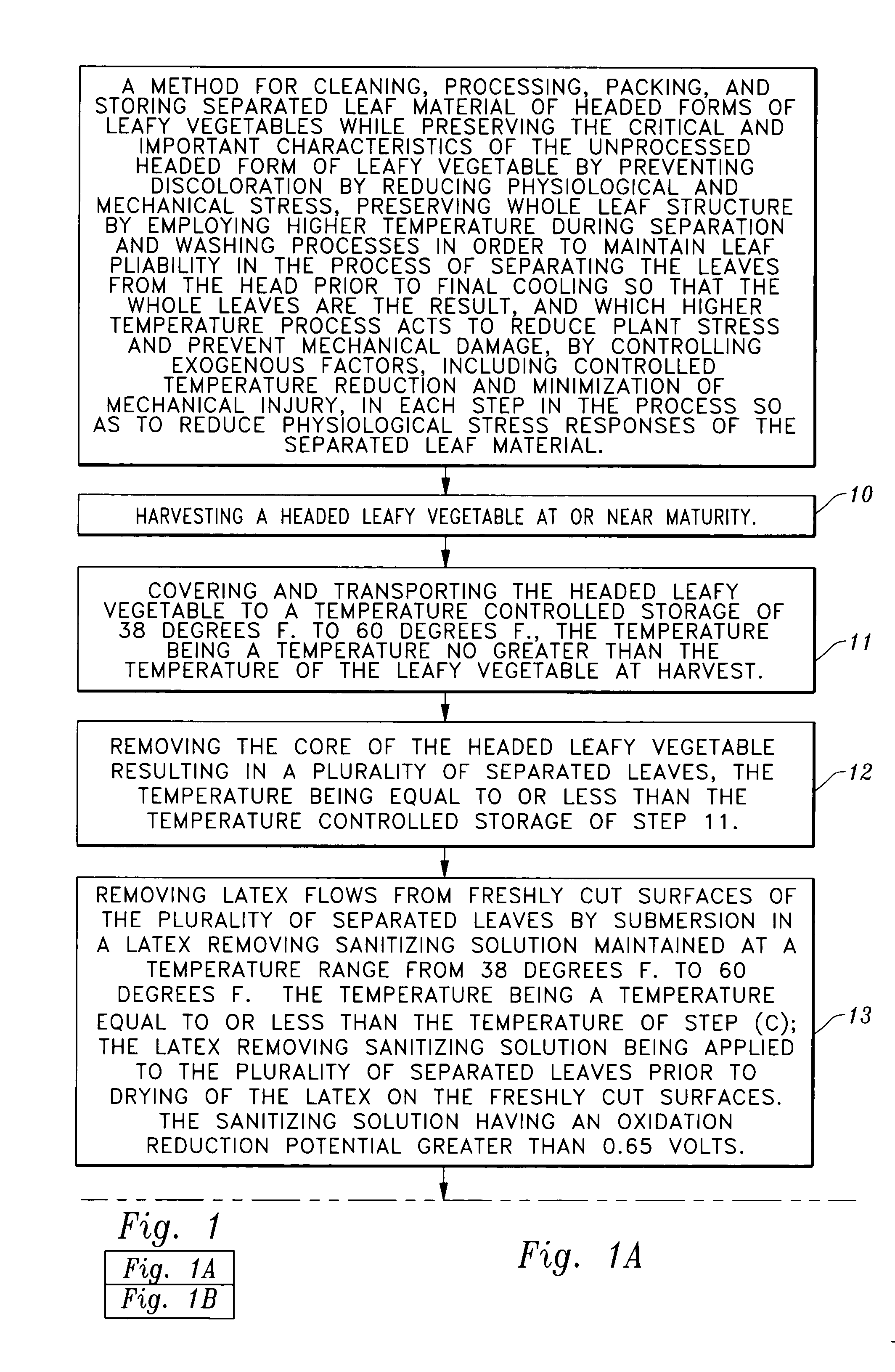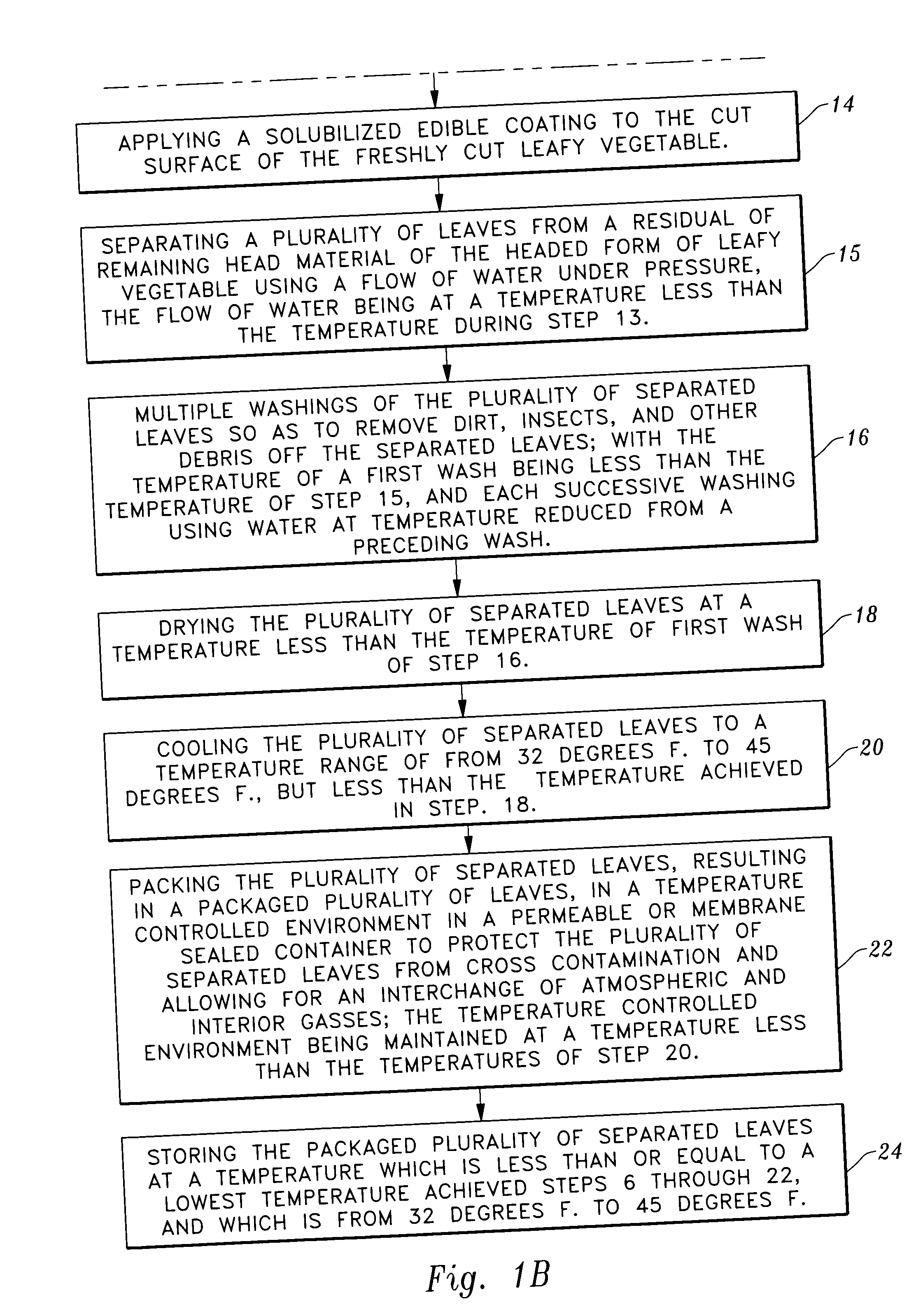Method for cleaning, packing, and transporting vegetables
a technology for cleaning, packing and transporting vegetables, applied in the field of cleaning, packing, packing and packing vegetables, can solve the problems of reducing the quality of vegetables, and reducing the quantity of vegetables exported, so as to reduce stress and damage to vegetative tissu
- Summary
- Abstract
- Description
- Claims
- Application Information
AI Technical Summary
Benefits of technology
Problems solved by technology
Method used
Image
Examples
Embodiment Construction
[0029] Reference will now be made in detail to the present preferred embodiments of the invention as illustrated in the accompanying drawings.
[0030] In accordance with the present invention, there is provided a unified method for reducing plant stress in cleaning, processing, packing, and storing of separated leaves of headed varieties of vegetables, comprising: harvesting the headed leafy vegetable at or near maturity; coring the leafy vegetable: removing latex form cut tissues; separating the leaves from the cored head of the leafy vegetable using a flow of water, preferably under moderate pressure; washing said separated leaves so as to remove dirt, insects, and other debris off the separated leaves, with preferably the multiple washing being used with each successive washing done at a increasingly reduced water temperature; drying said separated leaves; cooling said separated leaves; and packaging said separated leaves in a permeable or membrane sealed container allowing for an...
PUM
| Property | Measurement | Unit |
|---|---|---|
| oxidation-reduction potential | aaaaa | aaaaa |
| oxidation-reduction potential | aaaaa | aaaaa |
| mechanical stress | aaaaa | aaaaa |
Abstract
Description
Claims
Application Information
 Login to View More
Login to View More - R&D
- Intellectual Property
- Life Sciences
- Materials
- Tech Scout
- Unparalleled Data Quality
- Higher Quality Content
- 60% Fewer Hallucinations
Browse by: Latest US Patents, China's latest patents, Technical Efficacy Thesaurus, Application Domain, Technology Topic, Popular Technical Reports.
© 2025 PatSnap. All rights reserved.Legal|Privacy policy|Modern Slavery Act Transparency Statement|Sitemap|About US| Contact US: help@patsnap.com


